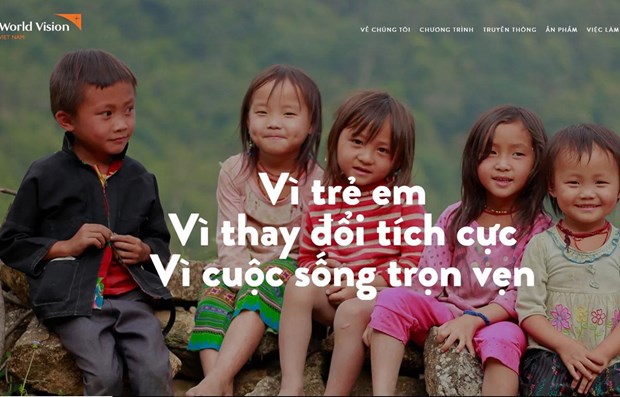US finances 2.4 million USD for Vietnam's child labour prevention, control
A 2.4-million-USD project on child labour prevention and control, financed by the US Department of Labour, is being carried out in Vietnam's Da Nang city, as well as Dien Bien and Quang Nam provinces.
 Vietnamese children (Photo: VNA)
Vietnamese children (Photo: VNA)The information was released at a workshop in Hanoi on August 18 to start the Action against Child Exploitation (ACE) project by the Vietnamese office of the international child-focused agency World Vision.
Specifically, the child labour prevention and control project is being implemented in Tuan Giao and Muong Ang districts in the northern province of Dien Bien; Son Tra, Hai Chau and Lien Chieu districts in central Da Nang City; and Tam Ky city of its neighbouring province of Quang Nam, from November 2021 to September 2024.
It aims to strengthen the capacity of the Vietnamese Government to address Worse Forms of Child Labour (WFCL), including Online Sexual Exploitation of Children (OSEC), and violations of acceptable working conditions.
To achieve its aim, five main groups of interventions have been designed, such as awareness raising to increase community knowledge on services available for children engaged in the WFCL; capacity building activities for members of child protection committees, social workers and service providers; community engagement activities; and partnership promotions to detect, remove and respond to OSEC.
In the past few years, Vietnam has made significant strides in the fight against child labour by developing a strong legal framework aligned with international labour standards and carrying out several programmes and projects to counter the issue nationally and locally. However, the negative phenomenon lingers on in the country, especially in the economy's informal sector.
The second national survey on child labour, conducted in 2018 by the Ministry of Labour, Invalids and Social Affairs (MoLISA), showed the rate of child labourers from 5 to 17 years old decreased from 9.6% in 2012 to 5.4% in 2018, 2 percentage points lower than the average Asia-Pacific rate, and over 4 percentage points lower than the global average. This has created favourable conditions for Vietnam to participate in the signing of trade agreements and global integration and strengthen international cooperation in preventing and reducing child labour.
Doseba Tua Sinay, National Director of World Vision Vietnam, said that the intensified risk of child labour requires the Government and related stakeholders to make collective efforts, as individual work alone will not bring the community to the zero child labour goal.
Rafiq Mangi, deputy director of the ACE Project, said during the 5th Global Conference on the Elimination of Child Labour held this May in Durban, South Africa, delegates agreed on the Durban Call to Action, which outlines firm commitments to end child labour.
"The project is adding a voice to the global call to end child labour, reaffirming Vietnam's commitment towards zero child labour, bringing life-changing impact to the most vulnerable children and towards life in all its fullness," he stated.
Nguyen Thi Kim Hoa, head of the Ministry of Labour, Invalids and Social Affairs' Child Protection Office, said Vietnam will continue completing laws and policies on child labour prevention, implement the 2019 Labour Code on juvenile workers, and develop intervention procedures for child labour.
Poverty reduction and social security will be implemented with child labour issues, she said, adding that education on child labour needs to be promoted among the parents, guardians and caregivers.
Management authorities at all levels will improve their capacity to find and intervene in child labour. Hoa said that a network of detecting child labour early and supporting high-risk children must be set up.
"High-risk children and their families should be able to access supportive policies and programmes to improve their incomes and have a chance to go to school or vocational training," she said./.













